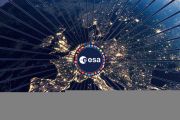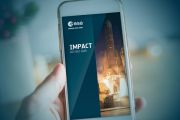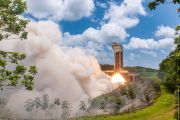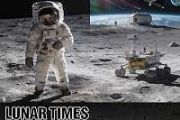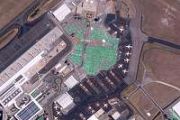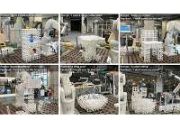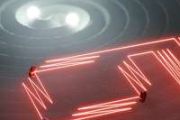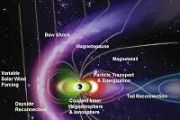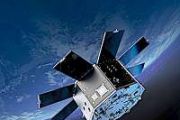
Copernical Team
Rocket Lab Marks Milestone with Successful Launch of NRO Mission from US Soil
 Rocket Lab USA, Inc. (Nasdaq: RKLB), a major player in launch services and space systems, has successfully executed the NROL-123 mission, named 'Live and Let Fly', for the National Reconnaissance Office (NRO). This mission, launched on March 21, 2024, at 03:25 EDT using the Electron launch vehicle from Launch Complex 2 in Wallops, Virginia, signifies Rocket Lab's first launch for the NRO from U.
Rocket Lab USA, Inc. (Nasdaq: RKLB), a major player in launch services and space systems, has successfully executed the NROL-123 mission, named 'Live and Let Fly', for the National Reconnaissance Office (NRO). This mission, launched on March 21, 2024, at 03:25 EDT using the Electron launch vehicle from Launch Complex 2 in Wallops, Virginia, signifies Rocket Lab's first launch for the NRO from U. NASA and SpaceX: Enhancing Space Exploration with the 30th Resupply Mission
 The International Space Station (ISS) anticipates the arrival of critical scientific experiments and technology demonstrations from NASA's latest commercial resupply mission, undertaken by SpaceX. This mission, marking the 30th of its kind, focuses on advancing studies crucial for understanding sea ice dynamics and facilitating plant growth in the microgravity of space.
Launched from Cape
The International Space Station (ISS) anticipates the arrival of critical scientific experiments and technology demonstrations from NASA's latest commercial resupply mission, undertaken by SpaceX. This mission, marking the 30th of its kind, focuses on advancing studies crucial for understanding sea ice dynamics and facilitating plant growth in the microgravity of space.
Launched from Cape Spacecraft with first Belarussian woman cosmonaut takes off
 Marina Vasilevskaya, Belarus' first woman cosmonaut, was aboard a Russian Soyuz spacecraft that blasted off successfully on Saturday headed for the International Space Station, the Russian Roscosmos space agency said.
"The Soyuz took off from Baikonur" in Kazakhstan at 1236 GMT, Roscosmos said in a statement, adding that the spacecraft went into orbit "as planned".
Initially programm
Marina Vasilevskaya, Belarus' first woman cosmonaut, was aboard a Russian Soyuz spacecraft that blasted off successfully on Saturday headed for the International Space Station, the Russian Roscosmos space agency said.
"The Soyuz took off from Baikonur" in Kazakhstan at 1236 GMT, Roscosmos said in a statement, adding that the spacecraft went into orbit "as planned".
Initially programm NASA's tiny BurstCube mission launches to study cosmic blasts
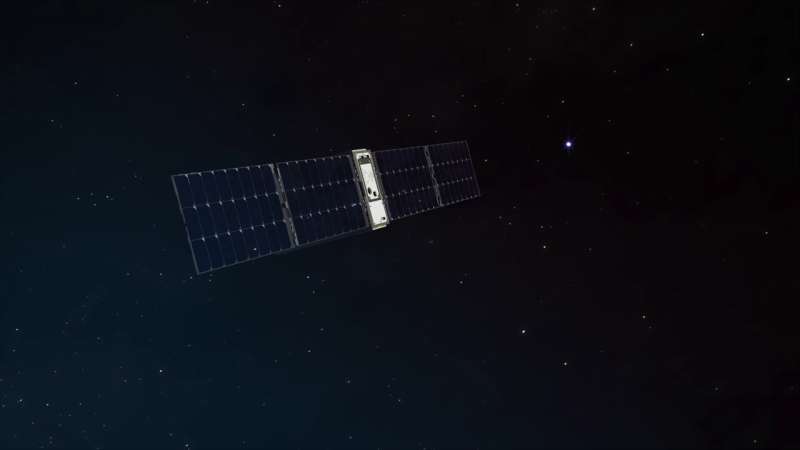
NASA's BurstCube, a shoebox-sized satellite designed to study the universe's most powerful explosions, is on its way to the International Space Station.
The spacecraft travels aboard SpaceX's 30th Commercial Resupply Services mission, which lifted off at 4:55 p.m. EDT on Thursday, March 21, from Launch Complex 40 at Cape Canaveral Space Force Station in Florida. After arriving at the station, BurstCube will be unpacked and later released into orbit, where it will detect, locate, and study short gamma-ray bursts—brief flashes of high-energy light.
"BurstCube may be small, but in addition to investigating these extreme events, it's testing new technology and providing important experience for early career astronomers and aerospace engineers," said Jeremy Perkins, BurstCube's principal investigator at NASA's Goddard Space Flight Center in Greenbelt, Maryland.
The unexplained: Giant Swedish archive logs paranormal phenomena
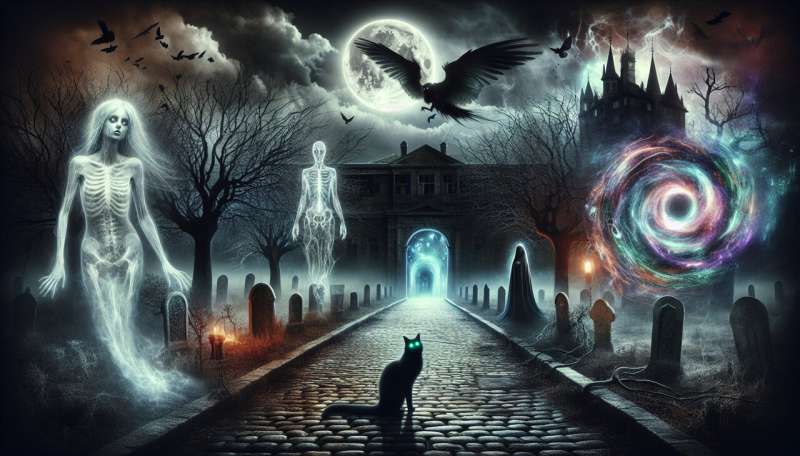
Newspaper clippings, books and first-hand accounts of people who said they visited other planets are catalogued in a giant Swedish archive on paranormal phenomena, attracting the curious and researchers from around the world.
The Archives for the Unexplained (AFU) claims to be the world's biggest library of paranormal phenomena, with 4.2 kilometers (2.6 miles) of shelves running underground.
Clas Svahn, 65, and Anders Liljegren, 73, who run the archive located in the southeastern town of Norrkoping, say they are neither superstitious nor believers, but rather "curious investigators of the unknown".
The AFU—the name of both the library and the association that has collected documentation for more than 50 years—is mainly comprised of books, but also more original documents, such as first-hand accounts of paranormal activity recorded on tape and photos of ghosts.
"What we are building here at AFU is depository knowledge," explains Svahn, showing AFP journalists around the 700-square-metre (7,535-square-foot) library.
"We're trying to get as much as we can on... every kind of unsolved scientific mystery that we can find... to make this available for the world."
The library receives around 300 visits each year, by appointment only.
A journey through ice and fire
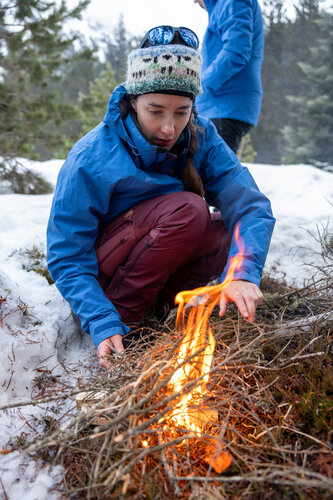 Image:
ESA astronaut candidate Rosemary Coogan lighting a fire during winter survival training in the snowy mountains of the Spanish Pyrenees as part of her basic astronaut training.
Image:
ESA astronaut candidate Rosemary Coogan lighting a fire during winter survival training in the snowy mountains of the Spanish Pyrenees as part of her basic astronaut training. Setting a laser like sight on a path to practical fusion
 In the quest for a sustainable and productive energy future, scientists have long eyed nuclear fusion, specifically the fusion of hydrogen nuclei, as a prime candidate. The main challenge, however, has been the daunting requirement of extremely high pressures and temperatures to initiate the process.
The Helmholtz-Zentrum Dresden-Rossendorf's Dr. Tobias Dornheim, through the "X-ray laser o
In the quest for a sustainable and productive energy future, scientists have long eyed nuclear fusion, specifically the fusion of hydrogen nuclei, as a prime candidate. The main challenge, however, has been the daunting requirement of extremely high pressures and temperatures to initiate the process.
The Helmholtz-Zentrum Dresden-Rossendorf's Dr. Tobias Dornheim, through the "X-ray laser o Yale Scientists Uncover Earth's Hidden Bioelectric System
 In a landmark study, researchers at Yale University and NOVA School of Science and Technology, NOVA University Lisbon (NOVA-FCT), have unveiled how subterranean bacteria thrive in oxygen-deprived environments by harnessing a specialized family of proteins. These proteins enable the bacteria to offload excess electrons onto tiny hair-like structures known as nanowires, creating an intricate, natu
In a landmark study, researchers at Yale University and NOVA School of Science and Technology, NOVA University Lisbon (NOVA-FCT), have unveiled how subterranean bacteria thrive in oxygen-deprived environments by harnessing a specialized family of proteins. These proteins enable the bacteria to offload excess electrons onto tiny hair-like structures known as nanowires, creating an intricate, natu Spire Global and NVIDIA Forge Partnership to Revolutionize AI-Based Weather Forecasting
 Spire Global, Inc. (NYSE: SPIR) has entered into a strategic partnership with NVIDIA to push the boundaries of AI in weather forecasting. This collaboration will see the integration of Spire's Radio Occultation (RO) data and unique data assimilation (DA) capabilities with NVIDIA's Earth-2 Cloud APIs. The objective is to employ artificial intelligence to enhance the speed and accuracy of climate
Spire Global, Inc. (NYSE: SPIR) has entered into a strategic partnership with NVIDIA to push the boundaries of AI in weather forecasting. This collaboration will see the integration of Spire's Radio Occultation (RO) data and unique data assimilation (DA) capabilities with NVIDIA's Earth-2 Cloud APIs. The objective is to employ artificial intelligence to enhance the speed and accuracy of climate GomSpace and SAIC Advance Their Satellite Collaboration with New Development Phase
 GomSpace North America, in a significant advancement of their ongoing partnership with SAIC, a leading $7 billion Federal contractor based in Reston, Virginia, has embarked on a new phase. Initially forging a strategic alliance in 2023, SAIC has now acquired a satellite kit from GomSpace. This kit will be the cornerstone of a specialized satellite project spearheaded at SAIC's space development
GomSpace North America, in a significant advancement of their ongoing partnership with SAIC, a leading $7 billion Federal contractor based in Reston, Virginia, has embarked on a new phase. Initially forging a strategic alliance in 2023, SAIC has now acquired a satellite kit from GomSpace. This kit will be the cornerstone of a specialized satellite project spearheaded at SAIC's space development 





